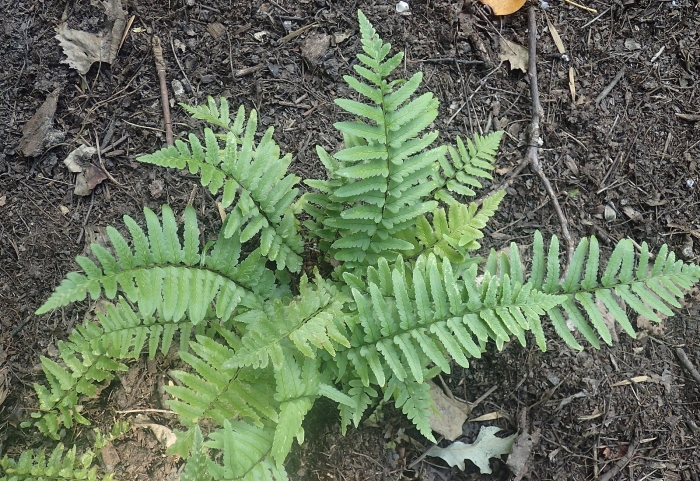Tokyo Wood Fern
(Dryopteris tokyoensis)
Tokyo Wood Fern (Dryopteris tokyoensis)
/
/

Krzysztof Ziarnek, Kenraiz
CC BY-SA 4.0
Image By:
Krzysztof Ziarnek, Kenraiz
Recorded By:
Copyright:
CC BY-SA 4.0
Copyright Notice:
Photo by: Krzysztof Ziarnek, Kenraiz | License Type: CC BY-SA 4.0 | License URL: https://creativecommons.org/licenses/by-sa/4.0 | Uploader: Kenraiz | Publisher: Wikimedia Commons |










Estimated Native Range
Summary
Dryopteris tokyoensis, commonly known as Tokyo Wood Fern, is a deciduous fern native to the forest undergrowth and shaded stream banks of East Asia, particularly Japan. It typically reaches a height and width of 2-3 feet (0.6-0.9 meters), forming a lush, upright clump of arching, dark green fronds. The fronds are bipinnate-pinnatifid, meaning they are divided twice with a feather-like appearance, and they can add a delicate texture to shaded garden areas. The fern does not produce flowers or seeds, as it reproduces via spores that are located in sori on the underside of the fronds.
Tokyo Wood Fern is valued for its graceful form and the bright green color it maintains throughout the growing season. It is an excellent choice for shaded woodland gardens, as a ground cover under trees, or in shaded borders. It prefers consistently moist, well-drained, humus-rich soil and thrives in part to full shade. While it requires medium amounts of water, it is important to avoid waterlogged conditions. This fern is relatively low maintenance, but it may need protection from harsh winter winds in colder climates. It is not known for serious pest or disease problems, making it a reliable choice for gardeners seeking a resilient shade plant.CC BY-SA 4.0
Tokyo Wood Fern is valued for its graceful form and the bright green color it maintains throughout the growing season. It is an excellent choice for shaded woodland gardens, as a ground cover under trees, or in shaded borders. It prefers consistently moist, well-drained, humus-rich soil and thrives in part to full shade. While it requires medium amounts of water, it is important to avoid waterlogged conditions. This fern is relatively low maintenance, but it may need protection from harsh winter winds in colder climates. It is not known for serious pest or disease problems, making it a reliable choice for gardeners seeking a resilient shade plant.CC BY-SA 4.0
Plant Description
- Plant Type: Fern
- Height: 1.5-3 feet
- Width: 1.5-3 feet
- Growth Rate: Slow
- Flower Color: N/A
- Flowering Season: Non-Flowering
- Leaf Retention: Deciduous
Growth Requirements
- Sun: Part Shade, Full Shade
- Water: Medium
- Drainage: Slow, Medium
Common Uses
Border Plant, Deer Resistant, Low Maintenance, Potted Plant, Rabbit Resistant
Natural Habitat
Forest undergrowth and shaded stream banks in East Asia, particularly Japan
Other Names
Common Names: 느리미고사리
Scientific Names: , Dryopteris tokyoensis, Dryopteris sanmingensis, Aspidium transitorium, Nephrodium tokyoense,
GBIF Accepted Name: Dryopteris tokyoensis (Matsum.) C.Chr.